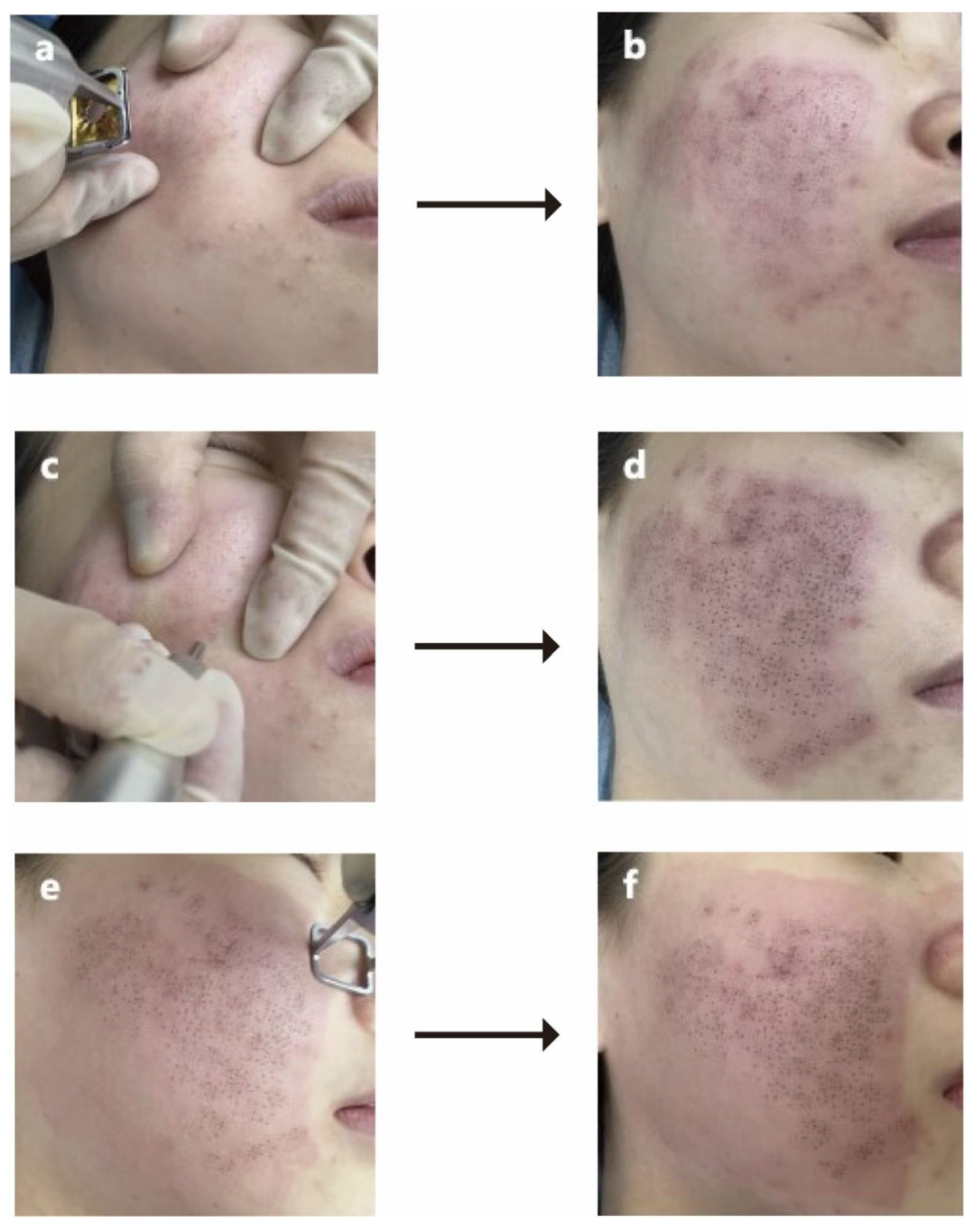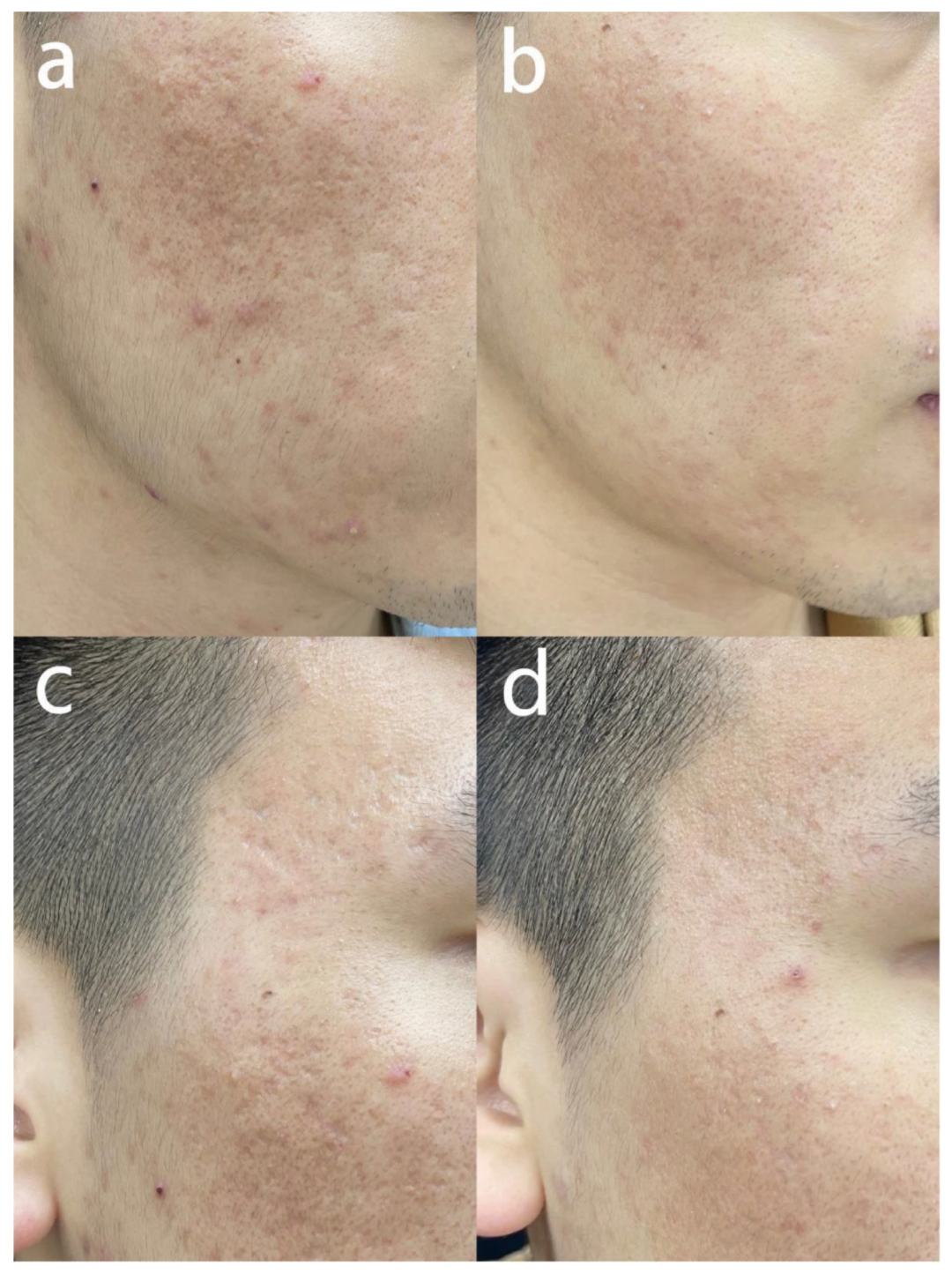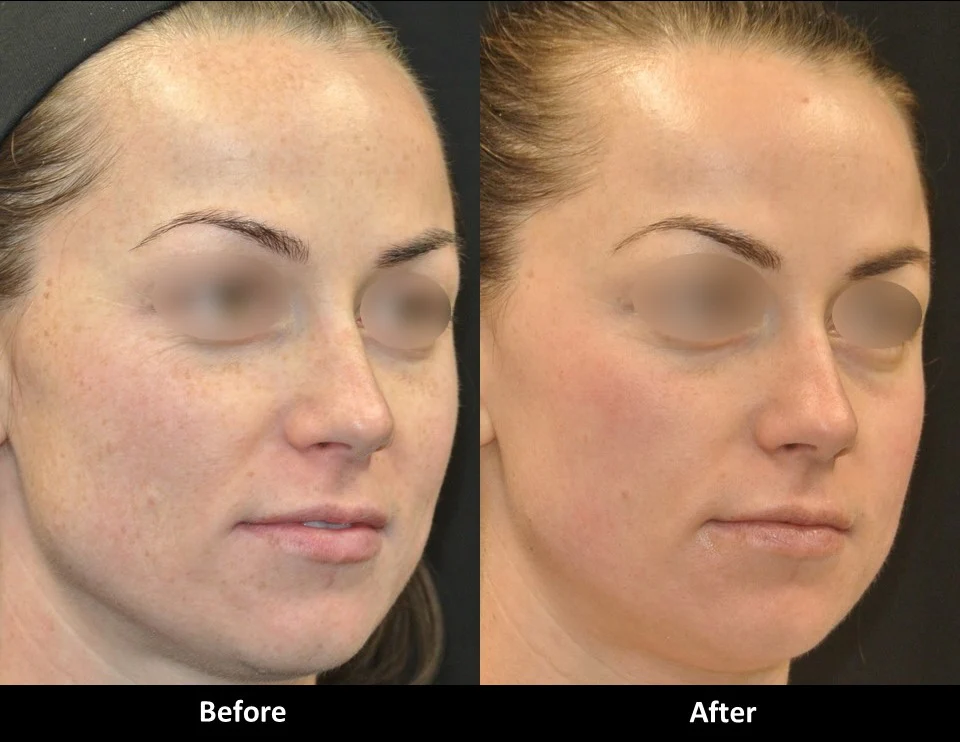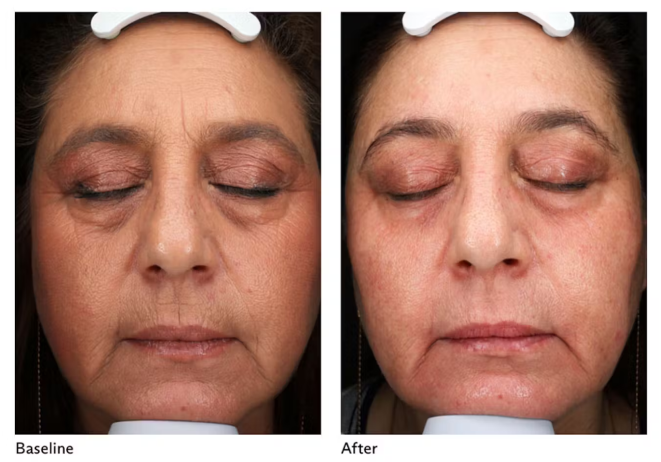CO2 fractional laser therapy has emerged as a transformative solution for addressing skin concerns such as acne scars, skin rejuvenation, and benign growths. This guide demystifies the technology, explores its benefits, and outlines what to expect during treatment—all in a beginner-friendly format.
1. Understanding Pain Levels During Treatment
The discomfort experienced during CO2 fractional laser treatment varies based on two primary factors: treatment depth and device technology:
- Deeper treatments (e.g., severe acne scars, mole removal) may cause moderate pain, but topical anesthetics ensure comfort.
- Superficial treatments (e.g., skin texture refinement) are often painless. Advanced devices like the UltraPulse minimize collateral tissue damage, reducing discomfort.
A 2024 study by the Journal of Cosmetic Dermatology found that 85% of patients reported “manageable discomfort” with numbing cream during deep treatments.
2. The Gold Standard for Acne Scar Removal

Acne scars, clinically termed atrophic scars, form when inflammation damages collagen. CO2 fractional lasers excel in scar revision due to:
Key Mechanisms:
- Microthermal Zones (MTZs): The laser creates microscopic injury channels up to 4mm deep, stimulating collagen synthesis to “fill” scars.
- Edge Resurfacing: It smooths scar borders, reducing their visibility by 50-70% after 3 sessions.
Case Study: Rolling Scars
A 2025 study tracked 50 patients with rolling scars. After 2 CO2 laser sessions, 78% reported “significant improvement” in skin texture. Icepick scars required 4-6 sessions for optimal results, with collagen remodeling continuing for 6 months post-treatment.
3. Skin Rejuvenation: Tightening and Smoothing
Originally developed for skin tightening in fair-skinned individuals, fractional CO2 lasers are now safe for darker skin tones (Fitzpatrick IV-VI) when used with proper parameters.
Dual-Phase Healing:
| Phase | Mechanism | Timeline |
|---|---|---|
| 1 | Vaporization of damaged epidermal layers | Immediate tightening |
| 2 | Neocollagenesis (collagen production) | 6-month peak |
Ideal Candidates: Individuals with photodamage, fine lines, or uneven texture. A 2024 clinical trial reported 65% improvement in wrinkle severity after 3 sessions.
4. Device Differences: Why Quality Matters
Not all CO2 lasers are created equal. Key distinctions include:
- High-End Devices (e.g., UltraPulse, DEKA SmartXide): Cost $200,000+ but deliver precise results with 24-hour downtime for superficial treatments.
- Budget Devices: May cause prolonged erythema (redness) or scarring, especially in periorbital areas.
Expert Tip: “A skilled practitioner can achieve 80% of results with a mid-range device but must adjust parameters meticulously,” says Dr. Emily Carter, Board-Certified Dermatologist.
5. Treating Delicate Areas: Eyes and Lips
While popular in Western countries for periorbital and perioral rejuvenation, CO2 lasers require caution in darker skin tones:
- Thin Skin Risk: The periorbital area has a dermal thickness of just 0.3-0.5mm, necessitating ultra-precise devices.
- Realistic Expectations: Lasers improve texture but cannot replicate surgical blepharoplasty results.
A 2025 survey of 100 dermatologists found that 92% recommend CO2 lasers for mild periorbital wrinkles but only 35% for moderate-to-severe cases.
6. Removing Skin Growths Efficiently

CO2 lasers excel at vaporizing benign growths with minimal trauma:
| Growth Type | Treatment Depth | Recurrence Rate |
|---|---|---|
| Moles | 0.5-1mm | 3% |
| Skin Tags | 0.2-0.5mm | 1% |
| Xanthelasma | 0.3-0.8mm | 5% |
Safety Note: All growths should be evaluated by a dermatopathologist prior to treatment to rule out malignancy.
7. Treating Hypertrophic Scars

Raised scars (e.g., from surgery or acne) respond well to CO2 lasers through three mechanisms:
- Volume Reduction: Laser ablation decreases scar height by 40-60%.
- Vascular Targeting: Coagulation of blood vessels starves the scar of nutrients.
- Collagen Remodeling: Polarized light microscopy shows aligned collagen fibers post-treatment.
Combination Therapy: A 2024 study found that CO2 laser + intralesional triamcinolone reduced scar volume by 72% vs. 53% with laser alone.
8. Recovery Timeline and Post-Care

Recovery varies by treatment depth:
| Treatment Type | Downtime | Key Precautions |
|---|---|---|
| Superficial | 5-7 days | Avoid sun exposure, use petroleum jelly |
| Deep | 2-3 weeks | No makeup for 10 days, daily sunscreen |
Post-Care Protocol: A 2025 consensus paper recommends:
- Gentle cleansing with non-soap cleansers
- Application of 1% hydrocortisone for itching
- Avoidance of retinoids for 4 weeks
9. Cost Breakdown by Treatment Area
Prices vary by provider and geographic location:
| Treatment Area | Hospital Range | Clinic Range |
|---|---|---|
| Full Face | $4,000-$8,000 | $1,000-$6,000 |
| Under Eyes | $1,500-$3,000 | $600-$2,000 |
| Mole Removal | $300-$800/mole | $150-$500/mole |
Value Tip: Some clinics offer package discounts (e.g., 3 sessions for 20% off) for acne scar revision.
10. CO2 Laser vs. Microneedling RF: Which Is Right for You?

| Factor | CO2 Laser | Microneedling RF |
|---|---|---|
| Best For | Deep scars, growths | Mild scars, sensitive skin |
| Downtime | 1-2 weeks | 2-3 days |
| Collagen Peak | 6+ months | 3-6 months |
| Pigmentation Risk | Higher (Fitzpatrick IV+) | Lower |
Decision Guide: Choose CO2 for severe textural issues; opt for microneedling RF if you need minimal downtime or have darker skin.
Conclusion

CO2 fractional lasers represent a gold standard for addressing deep scars, skin laxity, and benign growths. However, success hinges on three pillars:
- Device Quality: Invest in medical-grade lasers with FDA clearance.
- Provider Expertise: Seek board-certified dermatologists with 5+ years of laser experience.
- Post-Care Compliance: Strict adherence to sun protection and moisturization protocols.
To determine if CO2 laser therapy is right for you, schedule a consultation with a certified dermatologist. For additional resources, explore the cited studies and patient FAQs below.
Sources Cited
- American Society for Laser Medicine & Surgery (ASLMS) 2024 Guidelines
- Journal of Cosmetic Dermatology, Vol. 24, Issue 3 (2025)
- Dermatologic Surgery, “Fractional CO2 Laser for Acne Scars” (2024)
Frequently Asked Questions
Q: How many sessions will I need?
A: 3-6 sessions spaced 4-8 weeks apart for scars; 1-3 sessions for rejuvenation.
Q: Is the treatment painful?
A: Most patients rate discomfort as 3/10 with topical anesthesia. Deep treatments may require oral sedation.
Q: Can I wear makeup afterward?
A: Wait 7-10 days for superficial treatments, 14 days for deep treatments. Use mineral makeup only.
